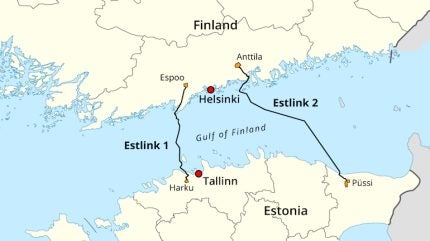
Finnish police are investigating whether a Russian ship was involved in the suspected sabotage of the 650 MW/450 kVDC EstLink 2 connector running across the Baltic Sea between Finland and Estonia to connect the Estonian grid to the Nordic.
The Estlink-2 power cable was disconnected from the grid on 25 December after an evident rupture. The Finnish and Estonian transmission system operators Fingrid and Elering immediately initiated fault investigation work together with the appropriate authorities. On Thursday 26 December, the fault was located in the submarine cable.
It had little impact on services, said Fingrid, but follows earlier damage to two data cables and the Nord Stream gas pipelines, both of which have been termed sabotage.
The electricity system in Finland is functioning normally and electricity reliability is good, and the electricity supply is currently sufficient. However, this situation may worsen if the weather conditions become colder for an extended period, and during cold and low wind periods, a failure of the connector may make it more likely that the power supply will become critical.
Preparations for the repair work on the connection have begun. It is estimated to take several months.
Investigation
Investigation of the sequence of events that led to the damage to the submarine cable are continuing. The total length of the connector is 170 km, of which 145 km is submarine cable, 14 km is overhead line on the Finnish side, and 12 km is underground cable in Estonia.
Finnish investigators probing the damage say they found an anchor drag mark on the seabed, apparently from a Russia-linked vessel, the oil tanker Eagle S, that has already been seized for investigation. Finnish police chief investigator, Sami Paila, said late on 29 December that the trail dragged for “dozens of kilometres”.
“Our current understanding is that the drag mark in question is that of the anchor of the oil tanker Eagle S. We have been able to clarify this matter through underwater research,” Paila told Finnish national TV broadcaster Yle.
“I can say that we have a preliminary understanding of what happened at sea, how the anchor mark was created there,” Paila said. He also stressed that the “question of intent is a completely essential issue to be clarified in the preliminary investigation, and it will be clarified as the investigation progresses.”
On Saturday, the vessel was escorted to inner anchorage in the vicinity of the port of Porvoo, to facilitate the investigation. It is being examined under criminal charges of aggravated interference with telecommunications, aggravated vandalism and aggravated regulatory offences.






